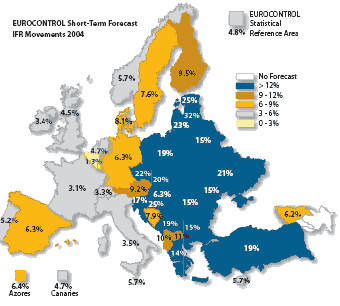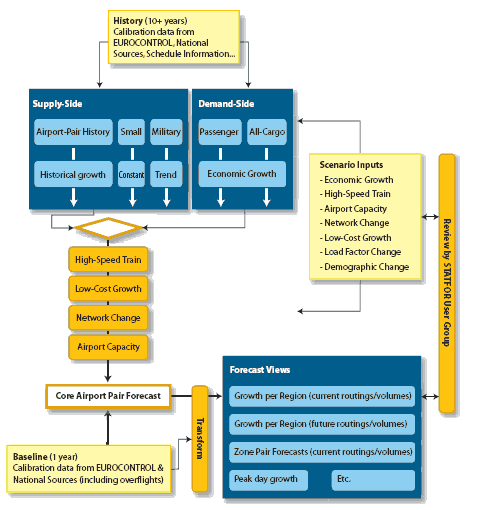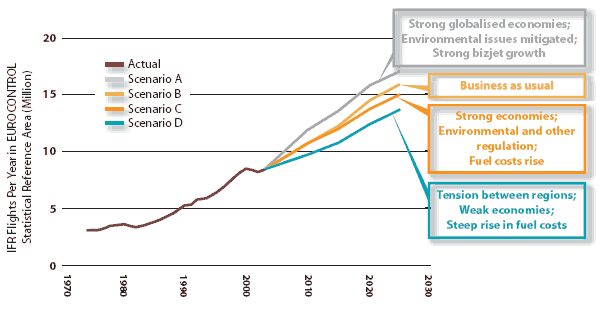Airline Forecasting types
EUROCONTROL - European Organisation for the Safety of Air Navigation - STATFOR
Èñòî÷íèê: http://www.eurocontrol.int/statfor/
Short-term forecasts
The short-term forecasts are good at capturing recent trends month by month and projecting these into the immediate future, up to two years ahead. Short-term forecasts are published four times a year.
This map shows the expected growth of the whole of 2004 based on actual growth until August 2004 and forecasts for the remaining part of 2004.
Medium-term forecasts
Medium-term forecasts look seven years ahead and build on the short-term forecasts. The medium-term forecasts combine flight statistics with economic growth and with models of other important drivers in the industry such as costs, airport capacity, passengers, load factors, aircraft size etc. The forecasts give a comprehensive picture of anticipated air traffic development in Europe. Using high- and lowgrowth scenarios, a likely range for growth is presented. The medium-term forecast is published once per year.
This figure shows how medium-term forecasts are generated. The input data are the longterm history of traffic, the detailed data for a baseline year and a set of scenario parameters describing economic growth and other scenario inputs.The core result is a forecast of traffic per airport pair.This approach gives the forecast flexibility and consistency as each user can receive whatever aggregated view is needed; e.g. for particular states, particular time periods, peak or average growth.
Long-term forecasts
Long-term forecasts are published every two years. The long-term forecasts look at a range of distinct, possible scenarios for how the air traffic industry might look in 20 years time.This allows a range of ‘what if?’ questions to be explored, for factors inside the industry (e.g. the growth of small business jets, or of point-to-point traffic) or outside (e.g. the price of oil, or environmental constraints).
This graph shows the 2004 long-term forecast, highlighting the four scenarios, and the amount of traffic they would generate.


